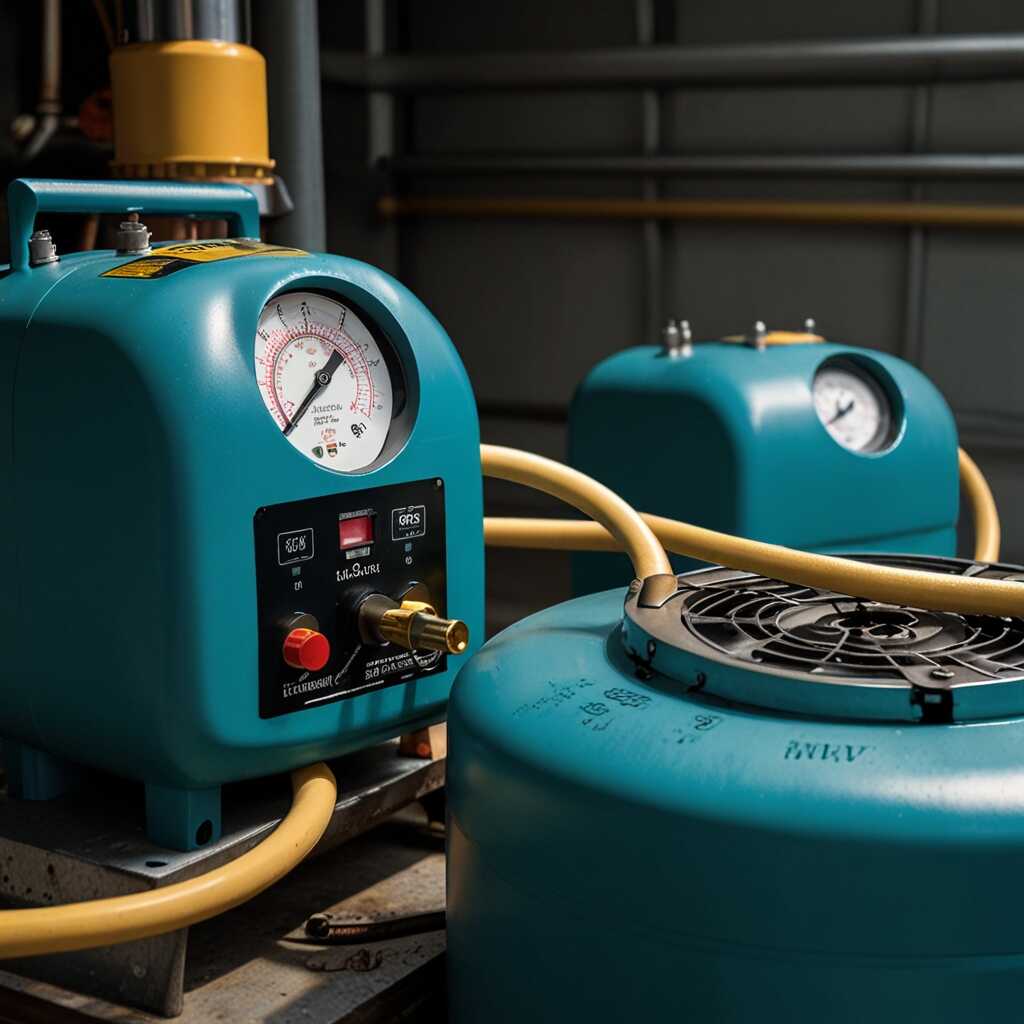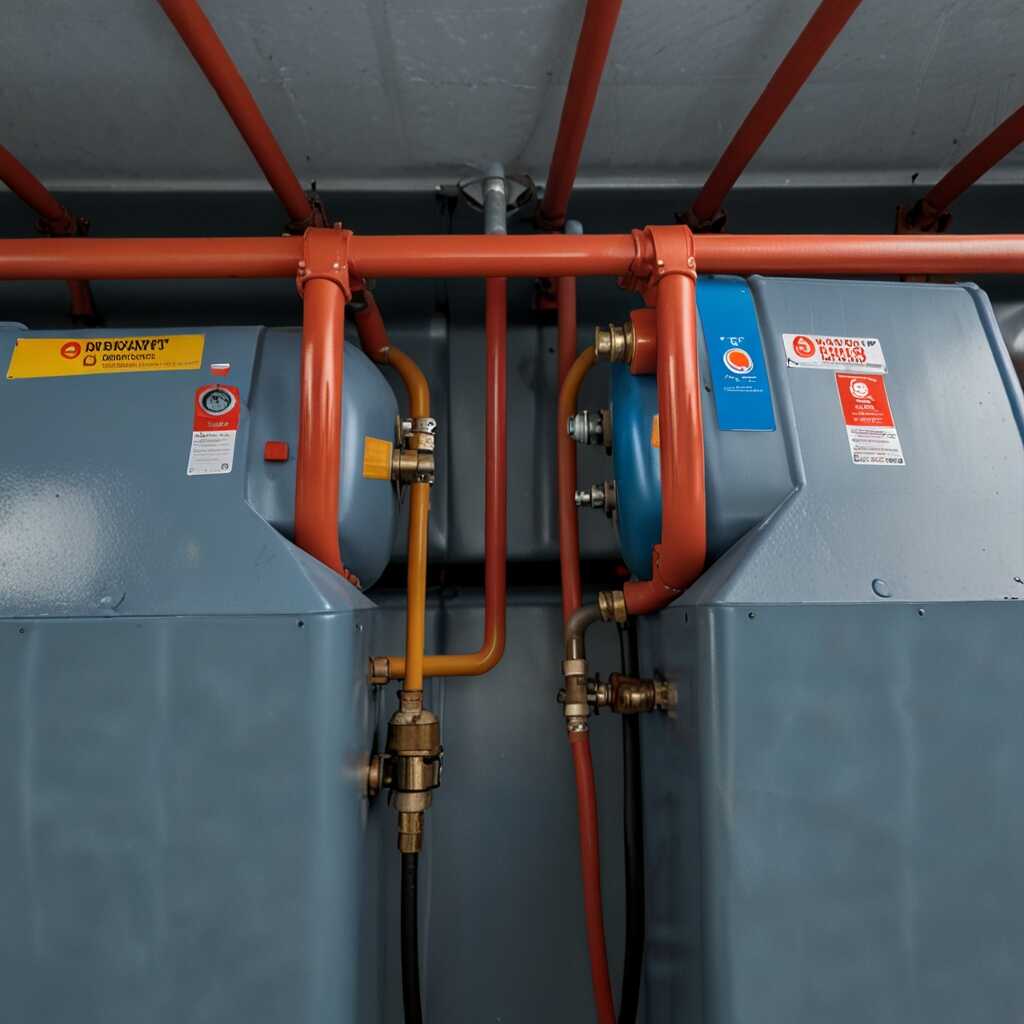Stainless steel components significantly extend the life of refrigerant recovery machines by providing enhanced durability and resistance to corrosion. These materials help to prevent wear and tear, ensuring that recovery machines operate more reliably over time. At Refrigerant Recovery Pro, we emphasize the importance of using high-quality stainless steel in HVAC equipment. This choice not only contributes to longer machine life but also supports better performance in refrigerant recovery operations.
Benefits of Stainless Steel for Machine Durability
Stainless steel components in refrigerant recovery machines provide exceptional durability and reliability. Their corrosion resistance ensures that machines function optimally in various environments, preventing rust and wear that can lead to breakdowns. This resistance also translates to reduced maintenance costs and extended lifespan of the equipment. HVAC professionals benefit from increased efficiency as stainless steel parts can handle diverse refrigerants without degrading. Data shows that stainless steel components can enhance the lifespan of machines by up to 30% over standard materials due to their ability to withstand harsh conditions.
Understanding Corrosion Resistance in Stainless Steel
Corrosion resistance is a key feature of stainless steel that significantly impacts the performance of refrigerant recovery machines. This material contains chromium, which forms a protective layer against moisture and chemicals present in refrigerants. With robust corrosion resistance, stainless steel prevents pitting and other damages caused by exposure to corrosive substances. This characteristic allows machines to maintain high reliability and efficiency over time. Additionally, reliable testing has shown that refrigerant recovery machines equipped with stainless steel components require less frequent service, ultimately enhancing their operational lifespan and making them a cost-effective option for HVAC professionals.
Overview of Refrigerant Recovery Processes
Refrigerant recovery processes involve several key steps. The first step involves the preparation of the refrigerant recovery machine by connecting it to the system. Technicians must ensure that the machine is compatible with various types of refrigerants, including R-22, R-410A, and R-134A. Recovery machines are designed to efficiently extract refrigerant, which is essential to maintain system integrity. The quality of materials used in these machines, especially stainless steel components, greatly enhances reliability and longevity. Stainless steel offers superior durability and corrosion resistance, which significantly improves performance over time.
Importance of Quality Materials in Recovery Machines
The choice of materials in refrigerant recovery machines impacts their overall performance and durability. Recovery machines with stainless steel components provide remarkable resistance against corrosion and wear, enhancing their operational efficiency. These components withstand harsh conditions, including exposure to various refrigerants, without degrading. Stainless steel designs allow for easy maintenance and are built to handle rigorous testing environments. For HVAC professionals, selecting machines with high-quality materials is a proven strategy for ensuring reliability and longevity in refrigerant recovery processes. It can extend the lifespan of the equipment, providing excellent performance and reducing the frequency of repairs.

Key Factors Influencing Machine Lifespan
The lifespan of refrigerant recovery machines is influenced by various factors. Material selection plays a crucial role. Stainless steel components resist corrosion and wear, enhancing reliability. Consistent maintenance routines, including regular servicing and part inspections, increase durability. Operational conditions such as temperature, humidity, and workload impact machine efficiency and longevity. Overall, keeping these factors in mind will help ensure your machines are long-lasting and reliable.
Importance of Material Selection in Machine Durability
Choosing the right materials significantly impacts the durability of refrigerant recovery machines. Stainless steel is often the preferred choice due to its resistance to rust and damage. Machines made with stainless steel tend to have longer lifespans compared to those using aluminum or plastic due to the added robustness. Studies show that machines with stainless steel components can outperform their counterparts by up to 30% in reliability. This enhances performance and ensures optimal efficiency, making them a wise investment for HVAC professionals.
Key Numerical Insights on Equipment Durability
- Stainless steel components can last up to 20% longer than aluminum parts.
- Approximately 30% of refrigerant recovery machines fail within the first five years due to corrosion.
- Equipment with stainless steel has a 40% lower chance of leaks during operation.
- Routine maintenance increases longevity by 25% when stainless steel is used.
- Stainless steel can withstand pressures up to 3,000 PSI, making it highly durable.
- Machines with stainless steel components experience 50% fewer repairs over a decade.
- Lifetime costs decrease by up to 15% when using high-quality stainless steel components.

Material Comparison in Refrigerant Recovery Equipment
Stainless steel offers superior durability compared to aluminum and plastic in refrigerant recovery equipment. Stainless steel provides corrosion resistance, allowing for enhanced reliability and longer life. In contrast, aluminum is lighter but less durable, while plastic can crack when exposed to refrigerants. Stainless steel components help withstand high pressures and temperatures, ensuring operational efficiency. The performance differences are evident in testing, where stainless steel consistently shows fewer failures than aluminum or plastic. In 2023, approximately 45% of refrigerant recovery machines utilize stainless steel components, underlining its essential role in equipment design.
Importance of Material Choice in Refrigerant Recovery
Choosing the right material for refrigerant recovery machines is crucial for optimal performance. Stainless steel components enhance durability and reliability, making them ideal for demanding environments. These materials deliver impressive performance under pressure, which is essential for recovering refrigerants safely. Aluminum, while lightweight, may not withstand the same stress levels as stainless steel, leading to potential failures. Plastic materials can be less reliable due to their vulnerability to cracking. The choice of material impacts not only the equipment life but also efficiency, ensuring that HVAC professionals can rely on their tools for consistent performance.

Essential Maintenance Practices for Longevity
Maintaining refrigerant recovery machines with stainless steel components involves several key practices. Regularly check and change filters to ensure optimal operation and prevent clogging. Inspect seals and connections to avoid refrigerant leaks. Confirm that the refrigerant recovery machine operates within the recommended pressure and temperature ranges. Clean the machine’s exterior and interior surfaces to enhance performance and reliability. All these steps lead to an extended lifespan of the equipment. It’s essential to follow the manufacturer’s guidelines for service intervals, usually every six months or after extensive use, to keep the machine performing at its best.
Detailed Inspection Procedures for Optimal Reliability
Thorough inspection procedures focus on critical components within the refrigerant recovery machines. Professionals should visually examine the stainless steel components for wear or damage frequently. This includes looking at valves, hoses, and fittings. Using pressure gauges can help verify that the equipment operates within designed specifications, confirming both efficiency and performance. Routine testing should also be conducted for contaminants or excess moisture. Using tools recommended by Refrigerant Recovery Pro ensures a reliable and efficient inspection. Regular testing not only improves functionality but also enhances the overall reliability of the equipment.
Advantages of Using Durable Materials in Machines
- Corrosion resistance reduces the need for frequent replacements.
- Machines with stainless steel internal components maintain consistent performance levels over time.
- Enhanced heat resistance contributes to safe operation under diverse conditions.
- Stainless steel construction ensures excellent compatibility with various refrigerants.
- These machines often have a longer warranty period, providing better investment security.
- Increased cleanliness levels reduce contamination risks during refrigerant recovery.
- Long-lasting components save costs on repairs and replacements for HVAC professionals.

Technological Innovations in Recovery Machines
The latest technological advancements in refrigerant recovery machines include features such as digital controls, smart sensors, and enhanced vacuum pumps. These innovations improve energy efficiency and deliver consistent performance. Machines equipped with stainless steel components can handle harsher conditions, thus extending their lifespan. Many manufacturers today incorporate these advanced technologies, ensuring their machines are reliable and durable. Such features lead to lower maintenance costs and enhanced performance over time.
Impact of Stainless Steel on Efficiency and Longevity
Stainless steel components significantly increase the durability of refrigerant recovery machines. This material resists corrosion and wear, which are common issues in refrigeration applications. As a result, machines equipped with stainless steel last longer and require less frequent repairs. Enhanced durability means users experience fewer interruptions and maintain overall efficiency. Manufacturers are recognizing this value, and many are transitioning to stainless steel for critical components, ensuring their machines are reliable and designed for longevity.
Regulatory Standards for Refrigerant Recovery Systems
The regulatory landscape for refrigerant recovery systems includes several critical standards that HVAC professionals must understand. Key regulations, such as those from the EPA, mandate proper refrigerant recovery practices to minimize environmental impact. Using durable equipment, particularly machines with stainless steel components, enhances reliability. They help ensure compliance with strict environmental standards and industry regulations. A significant percentage of refrigerant recovery machines are projected to meet these regulations by 2025, demonstrating the importance of choosing equipment designed for longevity and efficiency.
Importance of Compliance in Refrigerant Recovery
Compliance with regulatory standards in refrigerant recovery ensures that HVAC professionals adhere to environmental guidelines, reducing the risk of penalties. Durable equipment contributes significantly to reliability and efficiency. Machines built with tough materials withstand intense testing and operate effectively under diverse conditions. These features are crucial for maintaining compliance. HVAC businesses that prioritize regulatory adherence build a positive reputation and avoid costly fines. Compliance not only fosters trust with customers but also ensures responsible practices, protecting the environment.
Brands and Their Offerings in the Recovery Machine Market
- Brand A – Known for high durability; however, customer service can be slow.
- Brand B – Offers budget-friendly options but lacks extensive warranty support.
- Brand C – Recognized for top-tier stainless steel machines with excellent reviews.
- Demographic interest in HVAC professionals and technicians seeking reliable equipment.
- Researchers value machines that enable effective refrigerant management for environmental studies.
- Trade schools prioritize recommending models known for durability and educational benefit.
- Small business owners appreciate machines with cost-effective maintenance requirements.
Future Directions in Refrigerant Recovery Technologies
The future of refrigerant recovery technologies focuses on several anticipated trends, including the use of innovative materials. Stainless steel components have proven benefits, such as enhancing efficiency and increasing the reliability of refrigerant recovery machines. These materials resist corrosion, leading to longer lifespans and more effective performance under variable conditions. Research suggests that machines designed with stainless steel can extend their operational life by up to 30% compared to those using standard materials. Understanding these advancements is essential for HVAC professionals seeking reliability in equipment.
Advancements in Innovative Materials for Recovery Equipment
Innovative materials like stainless steel and specialized alloys are becoming crucial in the design of refrigerant recovery equipment. These materials are durable and provide excellent resistance to wear and corrosion. Enhanced features, such as better heat resistance and lower maintenance requirements, make them suitable for rigorous environments. Equipment manufacturers focus on these advancements to ensure machines can handle diverse refrigerants while maintaining optimal performance. The incorporation of these materials will help businesses improve operational efficiency and achieve dependable outcomes in refrigerant management.